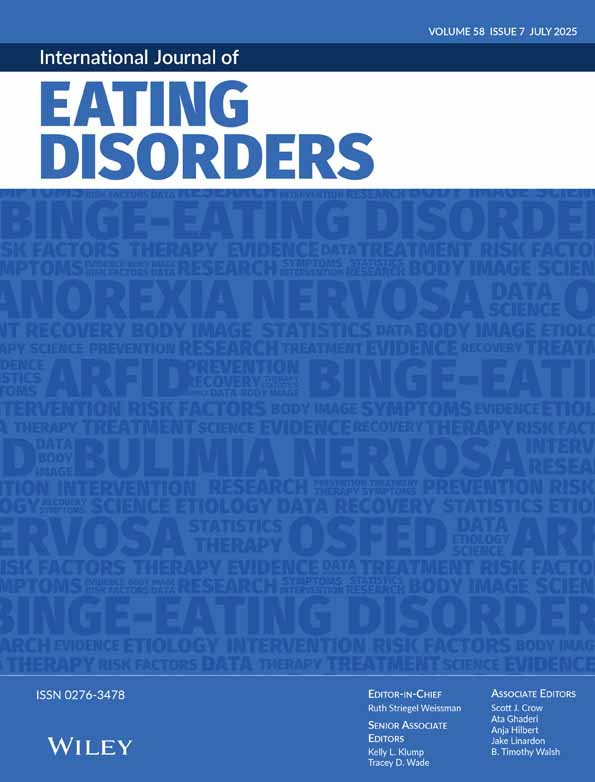Randomized controlled trial of warming in anorexia nervosa
Abstract
Objective
To determine if warming therapy increases the rate of weight gain in patients with anorexia nervosa (AN) who are hospitalized for refeeding.
Method
Patients admitted to an eating disorders unit of a university teaching hospital were randomized to treatment and control arms. All patients wore a heating vest for 3 hr a day for 21 days. In the experimental arm, the vest was set to medium heat and in the control arm it was set in the off position.
Results
Twenty-one females were recruited. They had an average age of 28.4 ± 6.6 years, a body mass index (BMI) of 17.7 ± 2.8, and the duration of AN lasted 13.6 ± 6.7 years. Ten subjects were randomized to the treatment arm and 11 to the control arm. Of the 18 completers, there was no difference in the change in BMI.
Discussion
Our study did not demonstrate an increase in the rate of weight gain with warming. © 2004 by Wiley Periodicals, Inc. Int J Eat Disord 35: 234–238, 2004.




